
**************************************
Join me for an upcoming Workshop:
Can't make these Workshop dates? Join me for a self-paced on-demand course:
Sue Larkey On-Demand Workshops
**************************************
Discussed in this episode
✅ Sequence, order and routine
✅ Writing skills like recipes and observations
✅ Why cooking for somebody else is important to teach
✅ Sensory desensitisation (you don’t have to do the eating for cooking to be worthwhile)
✅ Motor Skills
✅ The importance of “Backward chaining”
✅ Tips and tools to make it easier to start cooking
Cooking can be used as a tool to teach various skills such as reading, comprehension, sequencing, and even math.
Sensory Learning: Cooking can help children understand and navigate their sensory preferences, such as the sound of a frying pan or the feeling of cold items from the fridge.
Math Skills: Cooking can be used to teach fractions, volume, and even problem-solving skills. For example, doubling or halving a recipe can help children understand multiplication and division.
Motor Skills: Cooking involves various motor skills such as stirring, flipping, and opening containers. It’s a great way to help children develop these skills.
Hygiene: Cooking provides an opportunity to teach children about hygiene, such as washing hands before and after cooking.
Problem-Solving: Cooking can help children develop problem-solving skills. For example, if a recipe doesn’t turn out as expected, children can learn to think about what went wrong and how to fix it.
Social Skills: Cooking can help children develop social skills such as turn-taking, requesting help, and expressing likes and dislikes.
Creativity: Cooking allows children to be creative. They can experiment with different ingredients and flavors, and even invent their own recipes.
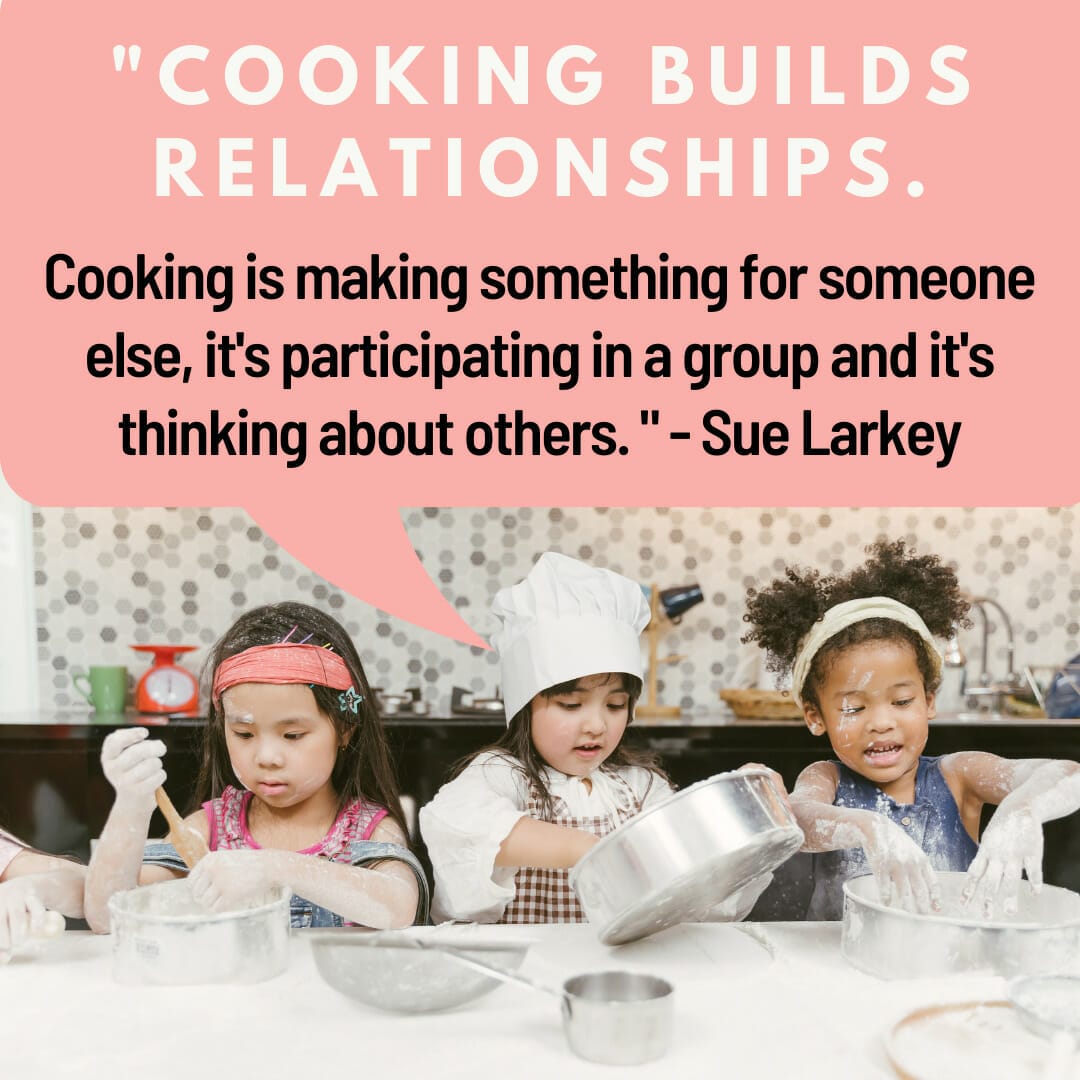
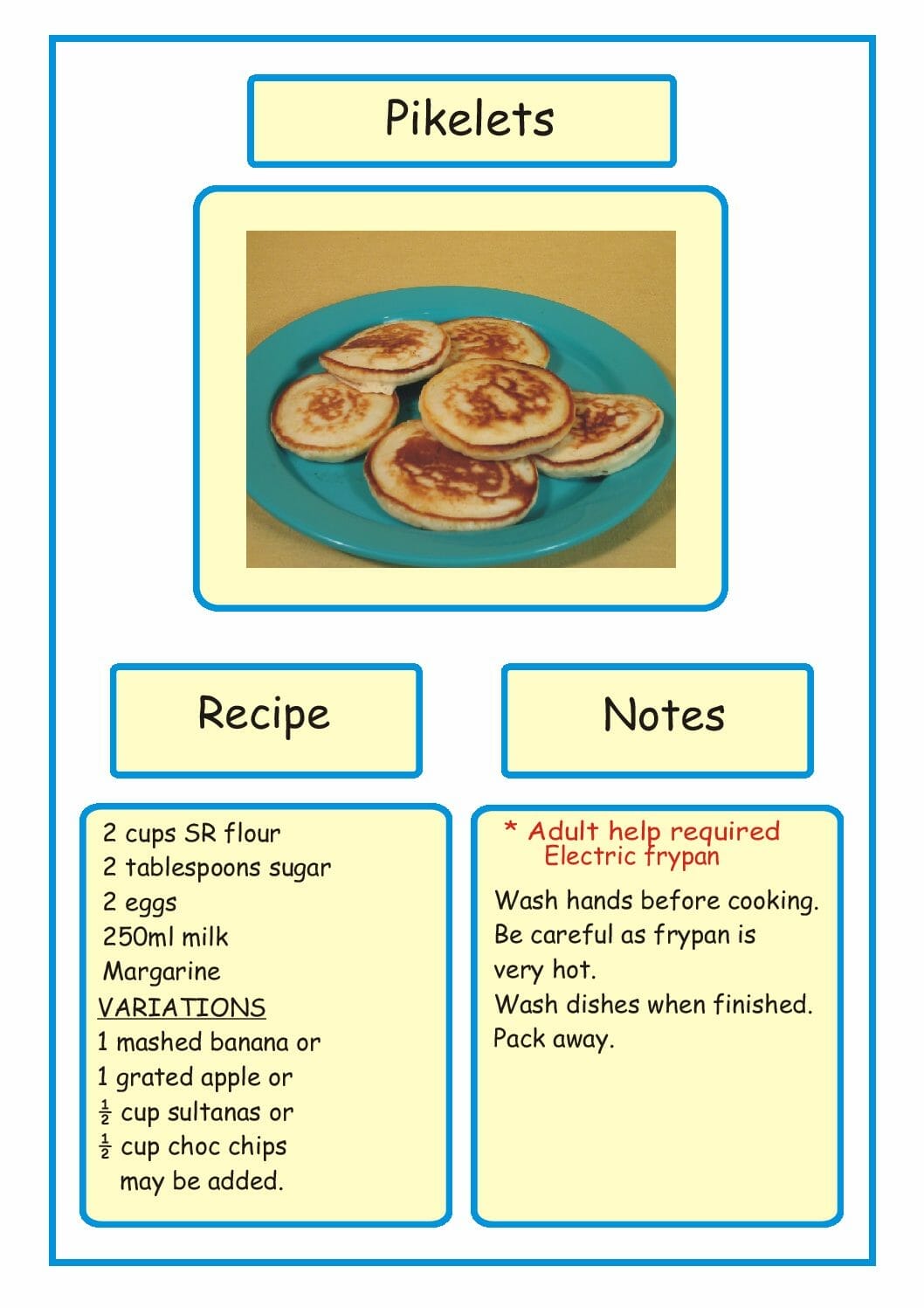

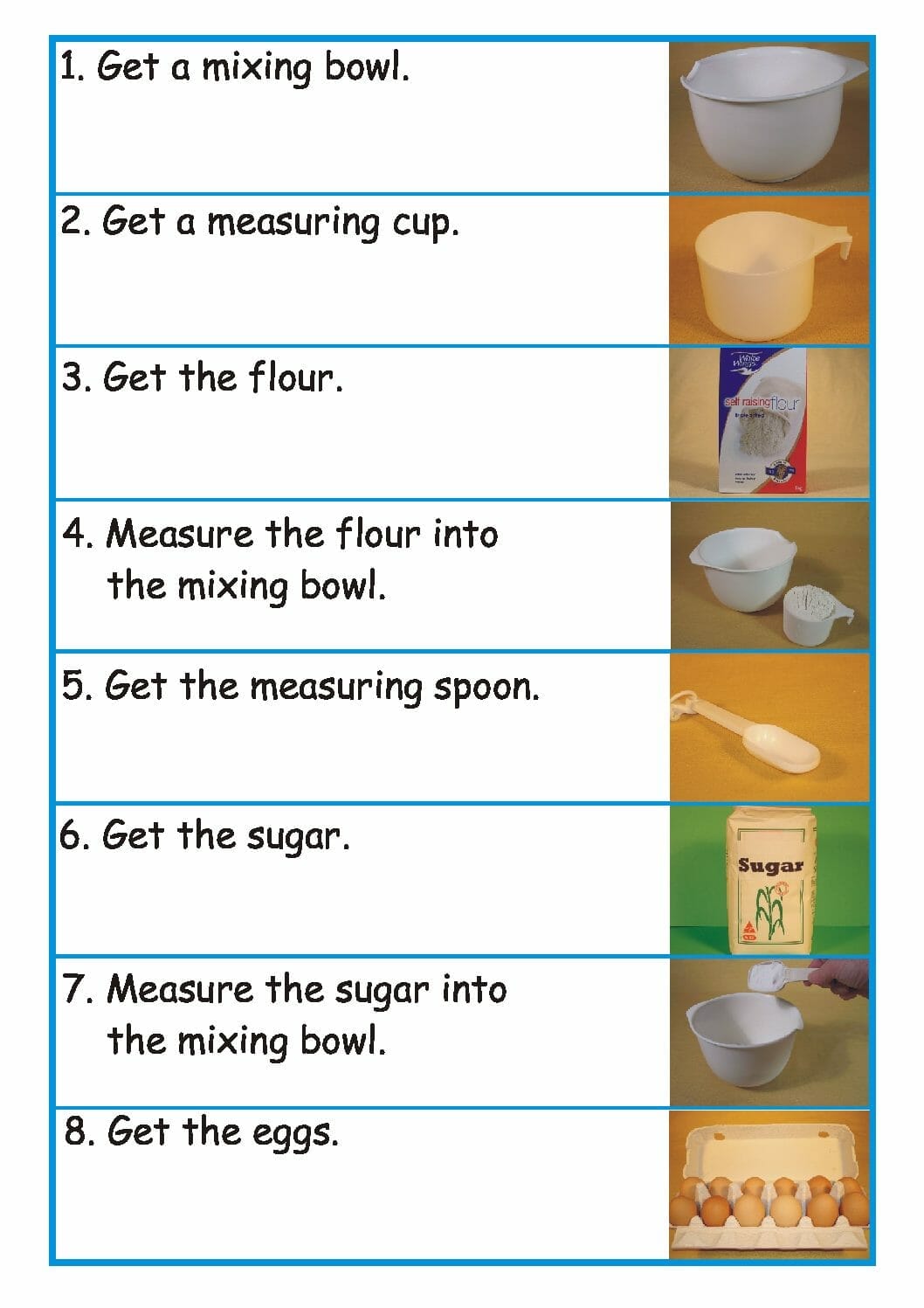
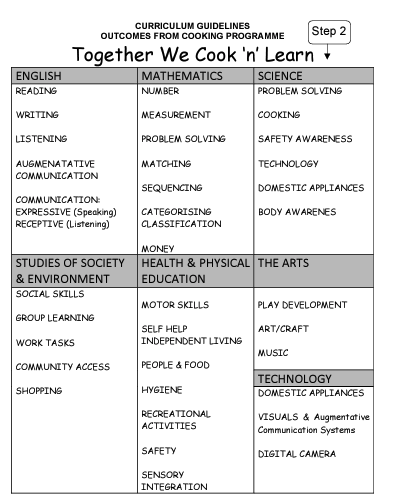
What’s in it for me?
Cookbooks
- 340 photos of the key stages fo each recipe (ingredients, utensils, equipment and recipe)
- PROVEN recipes that kids love
- 50 full colour pages with step by step recipes
- Easy activities to incorporate into school day/home
- DURABLE: spiral bind, gloss art paper
Tecahing Manual
- Over 300 skills to teach – from communication, maths, science, social skills and more (ALL curriculum areas)
- Outlines learning outcomes from cooking
- 6 step programme from evaluations to implementation
- Worksheets for follow up activites
- Heaps of time-savers and ideas
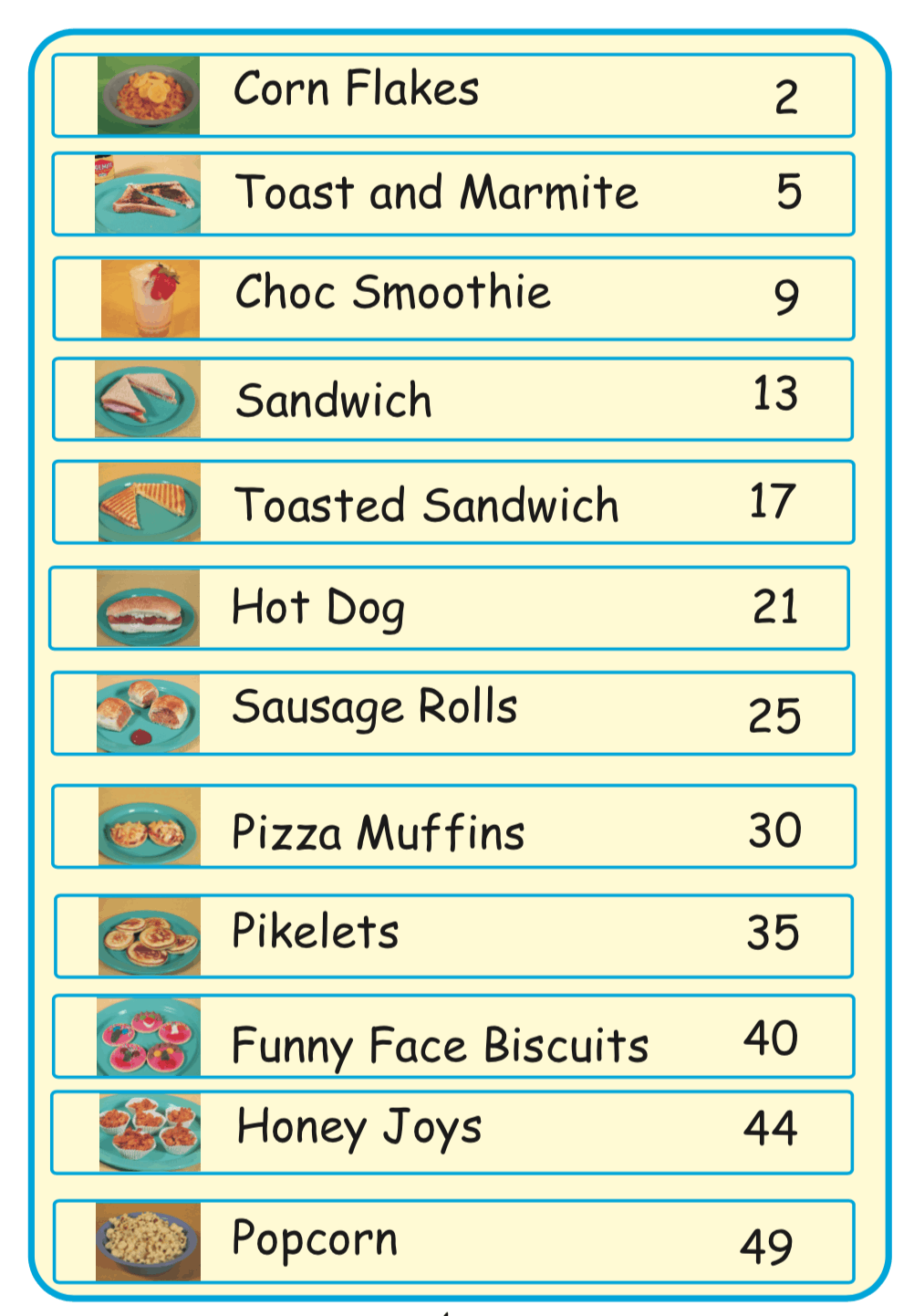
Transcript –
Hi everyone. Welcome to the Sue Larkey Podcast. As I always say, you have to embrace difference to make a difference. Let’s dive into today’s podcast.
Well welcome everybody. Today we’re gonna dive in deep to cooking. I absolutely love using cooking for every age and stage. You can teach so many things through cooking. In fact, I think you can teach. Everything through cooking. As a teacher, I use it for reading, maths, writing, social skills, hygiene, my goodness.
So we’re gonna dive in deep how you can use cooking to teach everything no matter what age or stage. Now for me, I think cooking is great because it also builds. Independent living schools, it allows children to actually have produced something that’s for the rest of the family, even if they don’t eat it.
When I did work with siblings, um, one of the things I’d get my children to do when I worked in a class of eight children with autism was make something for them to take home for their. Siblings, because the sibling research says it’s really important that children on the spectrum are seen to participate in the family and giving to their siblings and doing things to their siblings to build positive sibling relationships.
Otherwise, it’s a one-way relationship. And their non ASD sibling often takes on more of a caring role than a sibling role. So, Looking at ways that they can participate and be engaged is so important. And, um, as a lot of my families who use N D I S for funding, I say get, get your child to cook dinner for the family.
You know, and then they’re actually providing for the family, um, giving you a break from cooking, but they’re actually feeling like they’re contributing and everybody needs to feel like they contribute. And I believe cooking is a great way to do that. So that’s why I’m saying cooking can be used for. So many different things and I always get really excited talking about cooking.
Many of you’ll know my photo cookbooks and, um, those of you who listen to the podcast on periods will recall that Robin talked about the importance of taking the photos so that they are from the perspective of the person on the spectrum and how they see things. And this is so important. The photos in the photo cookbooks have been tested on hundreds of kids with autism, and one of the things we found was.
Using consistent colored background to take your photos because the color of the background can confuse kids on the spectrum. I dunno if you’ve ever, do you remember those magic eyes? I’m showing my age, but you know when things, things can become camouflage depending what color background you put on your pictures.
So I like using photos for cooking. I think they are a great way to show photo sequencing. And ultimately now with all the fantastic meal boxees you can get like, um, Marley Spoon and HelloFresh. I mean, ultimately if you’ve got a young person that can follow a visual recipe, they can be moving towards those sorts of visual recipes and the advantage of those, um, you can download those recipes and find them online anyway, those, um, food providers, you know, and buy the.
“Using Cooking for Teaching Various Skills”
Stuff yourself. You don’t have to buy the box. But they are really good recipe cards. And I know myself, um, when I was recovering from my thyroid surgery, which you’ve all heard me talk about when I couldn’t talk for quite some time, um, HelloFresh was fantastic for me, but we now just use just because I was unwell.
Now we use. The recipe cards and the kids choose every week, which recipes, and that’s another thing, getting kids to choose what they want for dinner is a really good problem solving skill or what they want in their lunch boxes. So cooking and food can be used for so many things. And um, those of you, you know, there’s lots of great cooking shows and Master Chef, but.
You know, there are lots of ways you can engage and if their peers are watching Master Chef, if they can talk about Master Chef or know who the contestants are or have a favorite contestant, it really does create a beautiful community. And I mean, many cultures, food is a key part of their community. I know when I taught a little boy, Um, from Vietnamese heritage, how important it was to their family that he ate specific foods, because culturally it was really rude not to eat certain foods at family functions.
So, um, the advantage of cooking as you can do desensitization too, and in get the child to experience a range of foods, and that’s exactly what we did with him. But we focused on the foods that were important to the family. Um, you know, Beyond rice, you know, so dumplings and different smells and um, you know, just getting him to smell coriander, lemongrass, getting him actually to experience those smells and desensitize.
And the thing with desensitization, it is about that touching, smelling, you know, think of a baby with food. They put their hands. In their food first bef. And when they’re little, they explore food. And many children with autism because of the way they engage in their early years, never explored food, never did that.
Throwing the bowl across the root or putting their hands in their wheat bick. So when I work with children in schools, often I go back to that, letting them put their hands in the, the mixture and feel things and tastings. And obviously hygiene wise, we mightn’t always. Eat that stuff, but I’ll put a little bit in a separate bowl for them to feel smell, let them lick it, whatever, you know, experiment with food like a baby, because they’re developmental stages in helping your brain desensitize.
And if you think of a baby’s food, often very bland, you know? And then they build up. Well, many children with autism didn’t go through those developmental milestones with food either. So sometimes we need to go back to that. Um, anyway, I could do a whole podcast. I will do a whole podcast on sensitivity, but I wanna dive in deep now for 10 ways to use cooking to teach.
Everything you can teach the whole curriculum. Sorry, am I sounding a little bit excited? I was doing jazz hands in. Those of you that know me, no, I get a little bit excited. But anyway, you can teach everything, absolutely everything. But I’m gonna tell you 10 top ways that I use cooking to teach. And this is at home or school.
And I don’t care if it’s a packet mix by the way. If they’re adding in eggs and oil, great. If they’re learning to turn on the oven, great. You don’t have to be measuring and mixing everything.
Um, and I’ve also put a free couple of free recipes to download in the blog this week, so make sure you download them. They’re just ones the kids love and I’ve used for many years and come from my photo cookbooks. So number one. Those recipes. If you download them and you do them for learning at home or in your classroom or preschool this week, or adult service, then cut them up.
Take the numbers off, or you can leave the numbers on the numerals on. It’s a sequencing activity. Teaching children the sequence. Learning the sequence is so important because life is about sequence and routines and teaching children’s sequences is so important. The order to do things, the order to cook, turn on the oven first, you know, wash your hands, turn on the oven.
All of those sequencing skills are so important, but getting them to, to actually cut up the recipe and get them to put it in the correct order is teaching problem solving. Is teaching, um, choice making. It’s teaching comprehension cuz they have to read what the instruction says. It’s also remembering the order they did things.
Um, so, so much can come in just from getting those recipes and just. Cut them up and see if they can sequence them and then cut the numbers off and see if they can put the numbers or the numerals on there so that they know their number 1, 2, 3, 4, 5. I mean, you can make it so much fun or cut the photo off and they have to match the words to the photo.
So I use these cookbooks, they’ve my, um, together we cook and learn for, I mean, you could do it every day in your classroom, um, and be teaching a different skill. Um, Then writing, getting them to write out the recipe or maybe, um, looking through recipe books and choosing some favorite food and getting them to write.
Children enjoy writing if it’s functional, asking to write out things that are boring or uninteresting. The little boy asked, talking about the Vietnamese boy he loved writing out menu. And he used to write out menus from Vietnamese restaurants and cuz their family went out a lot. So he’d bring in the menu and I would do things like cut it up and he had to categorize it into different, you know, how noodles, rice dishes, curries, and he could do all that.
I mean, he only had probably 10 words. But he loved that because it was a routine and it was using something of interest to him. And, um, he just loved all those sorts of recipes. Uh, sorry, those sorts of menus with the way they were laid out. But yeah, so writing, writing out the recipe or recording observations.
What happened when we put the toast in the toaster? What color was the bread when it went in the toaster? What color was it when it came out? Oh, and what? How long do we cook it when it burnt? All these are skills. Oh, if we put the toaster on number three, it comes out this color. What the next time we’ll put on number four, number five.
What if we have to cancel it? And they can write down these observations and making observations are really important because actually social skills are about observations. So learning to make observations when you are cooking. Can actually help your social skills because remember, in a conversation, you are constantly observing other people, so a toast changing color is no difference to a person’s face changing color.
Sometimes when people are embarrassed, their face goes red when toast is overcooked. It goes black, why do things change? So you can have a whole conversation around that. Um, so you can do sequencing, you can do writing, and of course reading. There’s so much reading involved in recipes, but also looking on the back of packets, um, reading.
Used by dates. That was one I remember with the kids. We did a whole week on looking on the used by date on milk and cream and things, and those who’ve worked in schools, you can always find out of date things in different fridges. I remember I had to go and raid all the fridges in other classrooms to put some out of dates in there.
Um, so the kids then had to look at their phone or know what date it was and work out if things were outta date. This is a really important skill, knowing when things are outta date. And even things in your pantry. We all have things in our pantry out of date. So teaching kids that, how to read instructions, how to read news by dates, these are all very practical skills.
Um, social skills, of course, turn, taking, sharing, waiting, asking for a turn, um, even manners. Um, temple Grandon, those of you who’ve heard Temple speak, she’s like really big on teaching children manners and how important manners are. Um, Up to you how hard you wanna go on that. But one of the things I did when I was working in a specialist school and I was working on the siblings, um, work and look, my passion about siblings really came from a little boy I taught who had classic.
I know, you know, I don’t really like the terms, but just to make it easier for you to understand, he sort of had classic autism, you know, hand flapping. Feet, toe walking, um, limited communication. Um, so he had got diagnosed with autism at two. It was very obvious to anybody that he had autism. Um, beautiful little boy, but his identical twin didn’t have autism.
And I just really felt for the family when you’ve got that direct identical comparison. And for the sibling who was going off to a mainstream school and the brother was going to a specialist school and it. Was just really made me wanna understand more about siblings. So I did a lot of research in siblings at that time and set up sibling groups and thought about in my program a lot in my teaching, how I could ensure that sibling relationship was formed.
Um, cuz he was only five and his brother was only five, so they’re just starting school. But also for his parents who were worried, the constant comparison from family and relatives, you know, so, I ended up doing a whole lot of research on siblings and setting up a, getting some grant money to set up a sibling group.
Um, and that was really fabulous and I, I loved it, but that’s as always my passion comes from actually working with kids and families and then it grows from there. But, um, so much of, sorry, I can’t even remember why I started talking about siblings and social. Skills. But anyway, but for me, um, oh, that’s right.
So one of the things I decided at that stage the next year, I had a class of mainly non-verbal children and I was trying to think, well, how do I get them to be involved with the family routines around the cooking and, um, how do they participate? So the couple of skills I taught them was to put a cup out on the table for their siblings at dinnertime, and we’d have like milk and water or.
Juice and whatever. The parents were happy for the children and family to drink, and the child with autism’s job was to fill up the cup for their siblings with their drink. Now, this was a really hard skill cuz many of my kids were used to pouring a drink for themselves. At first when we started teaching, they’d pour the drink and then drink it themselves.
Like they really didn’t understand leaving it for somebody else. So we taught it in the classroom first. Then I moved it to the staff room. My beautiful colleagues were so patient with my kids coming in. If they’re non-verbal, they’d hold up the milk and the juice and the teacher or teacher aided point to which one they wanted.
Then the child had to pour the drink and then move to the next person. It literally took me like a month to teach them that. They all wanted to drink the drink. It’s cute. You should see my face. It was just the cutest thing, like I’m pouring a drink for myself. No, they just, the concept that drink was for someone else took a while for them to understand.
Um, but what was really lovely was what came out of that. Some of my parents started to get more confident, take their children to a coffee shop. Because that was one of the challenges they had. They’d go to a coffee shop and the child would grab other people’s drinks. Like I’d never thought of it till then.
So there’s always these flow ons when you do these things. So teaching them to do that. And then one of my families taught their daughter to set the table, so that became her routine job. So the family, um, so we can build all these things up. One of my other families moved to that. Their son’s job was on weekends to help.
Give out breakfast cereal cuz they’re a family who liked to sit down for breakfast on Sundays. So then again, his job was to hand the wheat Bs or the Neutra grain and building that. But all my families reported, it was just amazing to see their child given the opportunity to contribute and to be involved and getting them to do things for the siblings.
What a difference it made to the relationship. And then it flowed on to when grandparents came over. You know, the grandparents were like, oh wow. You know, she set the table or he poured me a drink. You know, that’s, I mean, how nice is that? Imagine you’re sitting down for a Sunday breakfast and the child with autism paused the cordio or the juice for everybody.
“Cooking as a Tool for Sensory Desensitization”
Can you imagine what that is doing to their self-esteem, but also. The message it’s sending, this person can contribute. They are part of our family. So important. Okay, again, I probably should have done a whole podcast on that, but anyway, keep going on this. Um, but teachers, this is why I’m trying to enroll you to remember that big picture, that teaching children these.
Skills is part of social skills. It’s part of, um, in your classroom thinking, what jobs can a child on the spectrum do to be part of our community? And I’m always thinking about that. What are high status jobs? What are things that can build up their self-esteem and make them rest of the class see them as someone contributing to our class?
Um, maths, obviously, you know, measuring fractions. Um, Counting all of those things with maths. Maths is a pretty obvious one with cooking. Everyone tends to think about maths, but the other big one is motor skills. So teaching children to cut like, um, you know, it is very hard for children with autism to learn to do the foil and the clinging wrap sort of to hold it and rip it.
But I like those ones you can buy that. You slide back and forth a little bit like the mini guillotine. That you pull the cling wrap out and then slide it. Um, so learning those skills, but that requires pretty good fine motor and you have to be able to sort of hold the cling wrap and then cut. But can I encourage you to just get them to do the last step?
So rather than having to do the whole way across, you do halfway and they do the second half. Because sometimes it’s getting going on that, or if you’re doing ca opening a can with a can opener, you do three quarters and they do the last bit. So they get to see the success of it and then move it back a bit further and a bit ti further.
It’s called backward chaining, but for me that’s so important actually. Just getting them to do the last. Steps so they get the success. Cuz so often if they have to start at the beginning, so many things can go wrong and they never get to see the success. So when you’re doing cooking, really think, how can I break it down into smaller steps?
I was teaching a young boy to boil an egg. He loved an egg for breakfast and he used to wake up at 4:00 AM and wake his mother up to make the egg. And so I decided my goal was for him to learn to cook his own boiled egg. 100 steps in boiling an egg. Who would’ve thought? That’s a lot of steps. But again, we started at the end with him getting the egg out and putting it in his little favorite Thomas egg cup.
You know, that was the first part his mom taught him. And then we moved backwards, um, because then at least he was having quick success. Cuz you think a hundred over a hundred steps is gonna take a while, but at least he’s learning the last. Few steps and seeing success, seeing success, getting to eat was the success obviously.
So that actually he learned that pretty quickly. But I think cuz we did it in that backward way, that we made it really rewarding for him to do the steps cuz he was gonna get to eat the egg really quickly. So that, that was a really nice one too. So this, you know, these are things I’ve done over the years that I just like love, I love seeing that success and I love the fact his mom could sleep in.
I did teach another boy to make his toast. Same reason. Um. But that took six months. He just struggled with the, because he was very particular, maybe a little bit O C D with buttering, how he liked his butter on his toast and how he liked it, cut his fine motor skills, just was very hard. I end up getting one of those sandwich cutters.
By the way, you know the shops use those metal sandwich cutters that have, um, I hope you cut the, in, um, them in halves and quarters. Yeah, that was like a game changer for him having the right knife and not too sharp, but sharp enough that it cut without going all yucky, and him being able to lean on that metal sandwich cutter to cut through.
So, If you’ve got any problems, send them to me. I love helping and I might have had experience in the past because often with cooking it is trial and error as with everything, but things like that, I, that’s what I pretty much teach them now. It’s so much easier if you have that silver sandwich cutter and you can find them online too, by the way.
Um, the big one with, um, Um, motor skills, opening containers can be a real challenge for many of my kids. And you know, this is important, learning to open packets. I tend to teach them to use scissors to cut open packets, cuz if you try and open the flour and it goes everywhere, that can cause a sensory meltdown.
And then my kids are fearful about cooking, so teaching them to cut things open and again, you cut the first half, they just do the last little bit. Learning to stir, that’s a really hard. Skill for many of my kids look with chopping and things. I, I’m a real fan of using anything that can help that be quicker.
So I love that little, the little blender. The little moi where you put the stick in the top and it cuts up the carrot, the, um, onion because I find many of my kids an onion makes them cry. So, um, They used to be called a barix, but they’re not that you can buy, buy them much cheaper now, but it has the little container on the bottom, so they only have to cut the onion in half and quarters and then put it in there, zoom and zaps it, and it’s all cut up small.
So think about things like that. Um, I also, as I said, I think sensory, really thinking of all the sensory things, tasting, smelling, texture, ingredients, like I said at the beginning, lots of desensitization, smelling, um, getting them, uh, just experiencing a range of different smells. I remember. We did a whole week on spices and getting them, like, just getting those, one of those sort of cheap spice racks and getting them to smell all the things.
And I remember one of my boys, bless him, was smelling the cinnamon and then he sneezed and it just went everywhere. But, so I, I recommend actually now you just make little bits, not the whole bottle, but anyway. They’re gotta learn from these things. And it was, he laughed. Luckily he didn’t have massive sensory sensitivity.
I would’ve had some kids who that would’ve caused major problems. Um, and again, I’ll do tasting with things. I mean, lots of my kids love the smell of vanilla, for example. And in fact, that’s, uh, with, um, Cleaning, be really aware with cleaning products. Some of my kids, like if they have a really strong smell, they’ll, they really don’t like it.
But there’s that lovely, a lot of my kids don’t mind the smell of vanilla. And there is a vanilla sprain wipe equivalent that I find it’s the kids like it. Um, and it’s not so, um, in your face because that is a problem. If you go into a kitchen that smells really bleach, some of my kids won’t even go in there.
So, um, asking parents what smells their kids like. The same with the washing detergent. Some of my children really struggle with different washing detergents, but teaching them to put on gloves makes a big difference. Um, and I tend to find with gloves, you’re better off like having a size. Too big because it’s so hard from a fine motor perspective to get gloves on.
I find washing up gloves much easier than the cooking glove. You know, the hygiene, oh, what do you call it? The food prep glove, sort of those thin medical ones. Many of my kids don’t like the powder or the feel of those. So if my aims to have gloves, normally all my kids have their own pair of gloves with their name on it, and then I can make sure they’re washed regularly and we keep an eye on the hygiene.
But you can buy them pretty cheaply. Now those um, Washing up gloves, um, of course, conversation skills, you know, learning conversation skills around cooking, talking about food. What do you like, what do you don’t like? Imagine being able to ask your family, what’s your favorite dinner? You know, Nana or Nana or, you know, whoever, what’s your favorite dinner?
What’s your favorite dinner to cook? What’s your favorite birthday cake? You know? These are really good skills to learn to talk around food. Um, and that’s where those cooking shows are really great cuz I found over the years the kids pick up on conversation around food. Like if they watch Master Chef, they’ll learn a lot of language around texture and you know, different things about food.
Well, they don’t have to eat it, but if they can talk to people about that, how good would that be? Um, and another big one I love about cooking, um, is categories. What goes in the pantry, what goes in the fridge, what, um, you know, uh, what goes where in the kitchen. Learning how cutlery goes back in the drawer, learning where the knives go.
You know, learning, um, which things are dangerous in the kitchen, like knives and ovens and cooktops, you know, um, microwaves can be dangerous too. Um, teaching them how to turn on those appliances, um, how to set the, the temperature, how to change it. All these things. Now I use a lot of videos for that. So I’ll make a video like how to turn on the microwave and they can watch the video sequence.
I find that they prefer that to, you know, they love a video sequence of me showing how to turn on the oven and then I’ll do it and then I’ll get them to do it and video them doing it. So they actually get to see themselves, you know, I push this button, then this button, and so then they’ve got an actual visual of them doing it.
Cooking and Hygiene
So visual, , video modeling is great in any cooking actually. Um, and then last but not least, the wonderful thing about cooking. You learn a lot of hygiene, hand washing, um, swapping boards so you don’t have fresh meat and cook meat on the same thing. Cleaning things, you know, washing up after yourself, how to clean the dishes.
Um, you know what to do for Dish, still has some mess on it. Like, you know, someone washes the dish and then someone’s on drying and there’s. Still some dirt on it. Well, we’ve gotta rewash that, you know, pointing those things out, teaching them to wipe the benches, clean out microwaves, all those things.
They’re all really important life skills and for me, teaching hygiene is so important. So I’ve just covered 10 things with lots of little add-ins, but I am sure, and I hope you’ve got some. Fabulous ideas and I hope you’re inspired to do cooking. Now, if you dunno, my photo cookbooks, they’re, um, just photo sequences that I have used for many years.
Um, together we cook and learn. There’s also a cooking manual, so the reason we put together the cooking manual, a lot of. Schools were moving away from cooking and they wanted to, um, I guess had to show evidence that cooking teaches the whole curriculum. So we have, um, Heather and myself have actually put together like how you can use cooking to teach communication and how it fits under all the curriculum areas.
So that’s more for. Schools, the how to teach cooking, but if you are, or how to ensure cooking, um, meets the curriculum guidelines. It’s really, you know, all my books are time savers, teachers. It’s basically your programming, so you can just copy Yeah, photocopy and put it in your program. We are doing this.
The other thing I really wanna remind you with cooking is cooking’s about repetition. The more you do a recipe, the better every time they can be learning a new skill. So the first time you cook toast, you might be learning about turning the heat up and down. The second time it might be learning to plug in the appliance and turn it on.
You know, the next time it might be about that buttering or trying different spreads. But don’t change the recipes up too much. I recommend you use one recipe. And change your goal. So people on the spectrum love routines and repetition. So I would prefer that you cooked the same pizzas for 10 weeks, but every time you changed it, cuz just think you could do different toppings.
You could do, um, taking turns you to make add toppings on the pizza. Making your own pizza, maybe getting an order, finding out from someone else what sort of pizza they want, and you have to make the pizza they want. You might do it as a writing task or make up a menu of different pizzas, or you might research from pizzas, different restaurants, how much pizzas cost, and, um, find, you know, ma.
Do it as a maths exercise, a comparing prices with older kids. There’s so much you can do, so I’ll leave you to it. But um, I will link to the together. We cook and learn cookbooks. They are amazing. There’s two in the series, plus there’s a CD with all the photos on it so you can make your own. And we’ve had special schools actually make a cookbook for their school as like a fundraiser.
So you are welcome to use the photos. There’s no copyright on those. You know me, I’m all about. Time saving for you. So what you can do is get each child to make a recipe to add to the cookbook, and then put that all in a nice PDF and make a school cookbook. And then you can sell it as a fundraiser or give it away as Christmas presents, whatever.
But it’s a really nice way where you put in a photo of the child and their family recipe or. A photo of the child or, you know, and make it really like a community activity. Um, maybe getting one of the schools got grandparents to share their favorite recipes and then my kids had to get the photos And, um, so my kids, as in the kids on the spectrum, had to actually work out the sequence and make it into a photo recipe for other people to use.
So, Have fun with it. Cooking such a great thing to do, and I think everyone enjoys it, but the most important thing to remember, it’s not about the eating. Please do not worry about the eating. It’s all about those key skills, the things we can learn from cooking. Many of my children have sensitivity to food and honestly, it’s not about the cooking.
You don’t have to just cook something cuz they like it. You can cook other things too, to learn different things or as I say, they might be cooking for other people or you might be cooking pizza to learn lots of skills, but they don’t eat it. But you know what I’ve found over the years, Sometimes I end up eating it if we make it enough because again, the desensitization during the process.
So good luck. Have fun with it. I hope that you all download the recipes and have a go at doing some cooking over the next few weeks. I hope you’ve got some great tips and strategies to make a difference. Remember, strategies wear out, and not every strategy works for everybody. If you’re ready to dive in deeper to more strategies and ideas to make a difference, I’d highly recommend you consider Dr.
Tony Atwood or my online courses. For more information, visit my website, www.suelockkey.com.au.


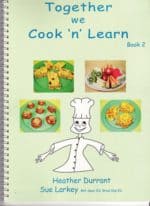
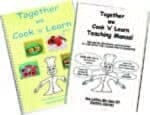

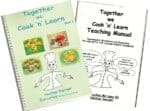





 Sorry we no longer ship items outside Australia. Please consider the digital versions of Sue’s Books –
Sorry we no longer ship items outside Australia. Please consider the digital versions of Sue’s Books – 